Every printer knows that marketing is important. Many invest in marketing tools such as blogs, print and email newsletters, and social media, but not too long after that, they cancel their subscriptions, put their freelancers on pause, and marketing stops.
One of the reasons is that many printers are so busy that they think they don’t need it. They read an article, go to a seminar, and get inspired to commit to marketing. But their presses are cranking, and they don’t “have time” to tend to it. So they let it drop. After all, they’re busy, busy, busy. That is very short-term thinking. Right now, the economy is strong, but what happens when something disrupts its mojo?
Granted, that may be hard to envision. Despite all the doom and gloom we often hear in the news, key economic indicators are strong. Unemployment is historically low, and consumer spending is historically high. This combination, combined with other strong economic indicators, are driving the need for advertising and marketing which, in turn, is driving volume on the production floor. With fewer print businesses to handle this volume, this can create a false sense of security among printers that marketing isn’t necessary.
Let’s look at the numbers.
Employment at Near All-Time Low
With the exception of the spike during the COVID-19 pandemic, unemployment has been falling steadily since 2010. Currently, it sits at 3.7%. Full employment is considered between 4% and 6%. U.S. unemployment has been at “full employment” since December 2021.
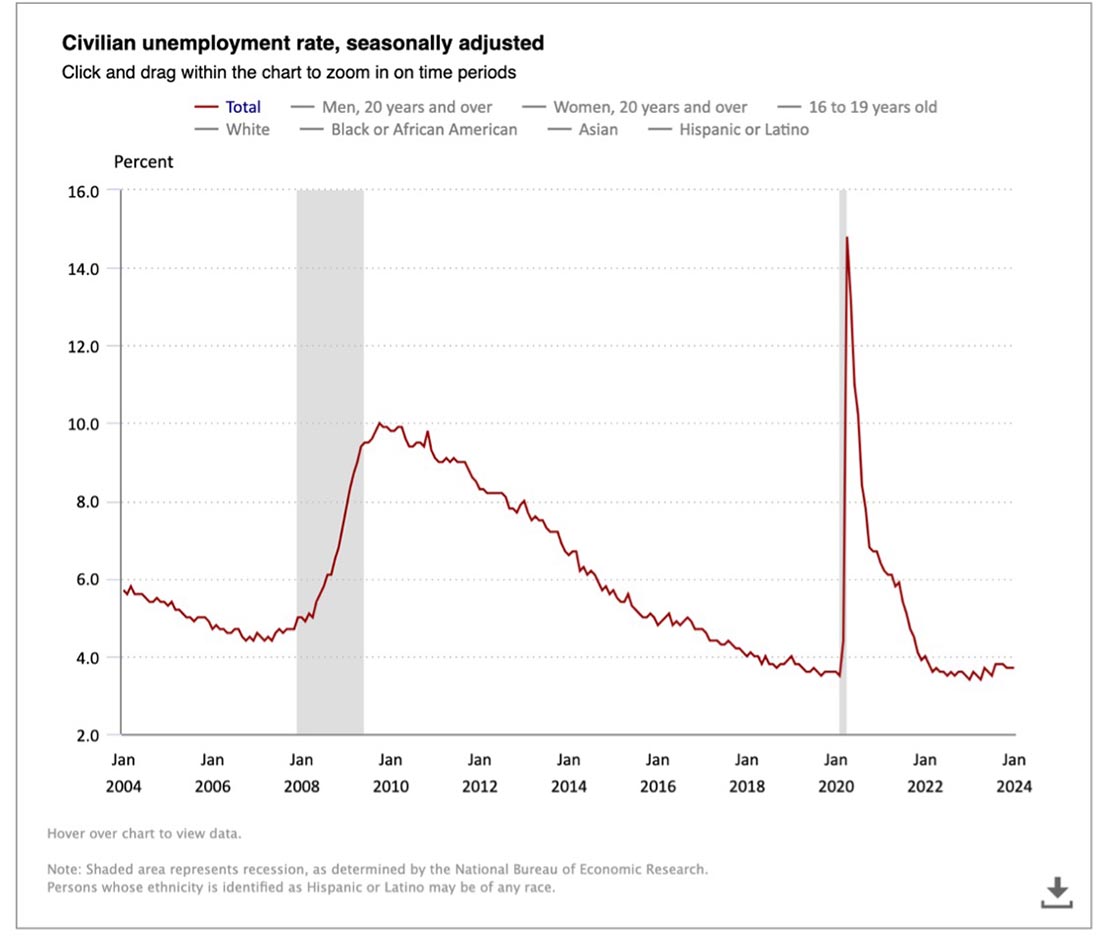
Source: U.S. Department of Labor
GDP All the All-Time High
Those “full employment” workers have long made the United States one of the most productive countries in the world. GDP tracks the health of a country’s economy, and currently, U.S. GDP is at its all-time high.
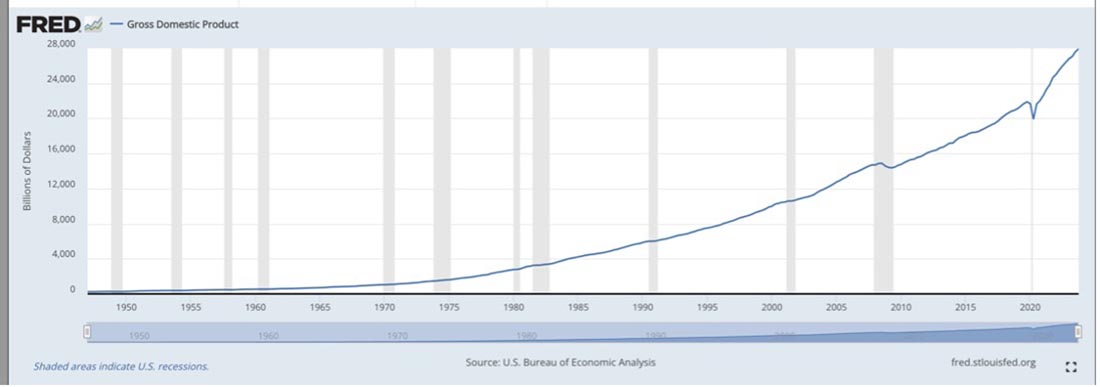
Source: Fred
Dow Jones Is Booming
The Dow Jones hit its all-time high several months back, as well. It has been hovering very close to that high ever since. This helps contribute to consumer confidence and, consequently, spending.

Source: MacroTrends
Disposable Income and Consumer Confidence Top the Charts
Another measure of economic health is inflation, and while inflation remains high resulting from international events like Russia’s invasion of Ukraine and the Israel-Hamas War, consumers’ disposal income is up, too. Barring a brief spike in 2020-2021, disposable income, too, is at an all-time high.
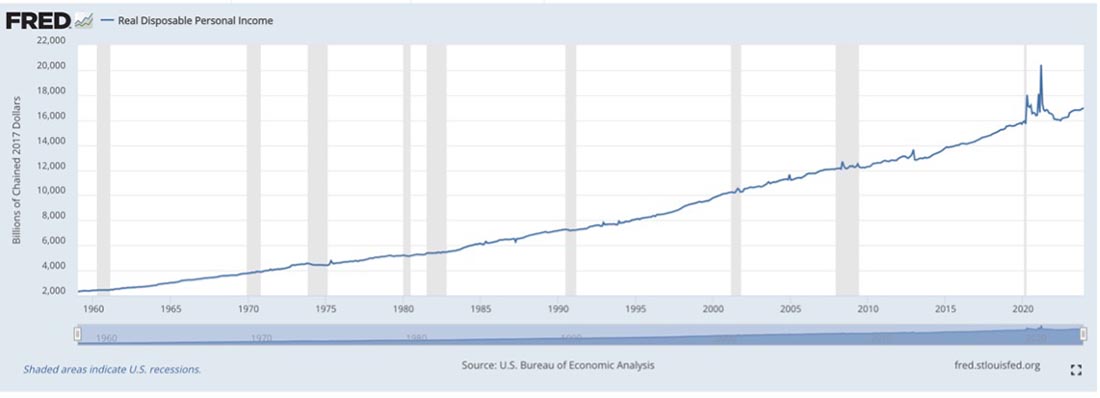
Source: Fred
Think consumers are saving all that money? Nope! Consumer spending is also at an all-time high. Just check out the parking lots of your local restaurants. They tell the tale!

Source: MacroTrends
Impact on the Printing Industry—More Work!
All of these strong economic numbers, including consumer spending, are driving strong ad spending. Indeed, ad spending is — you guessed it — also at an all-time high.
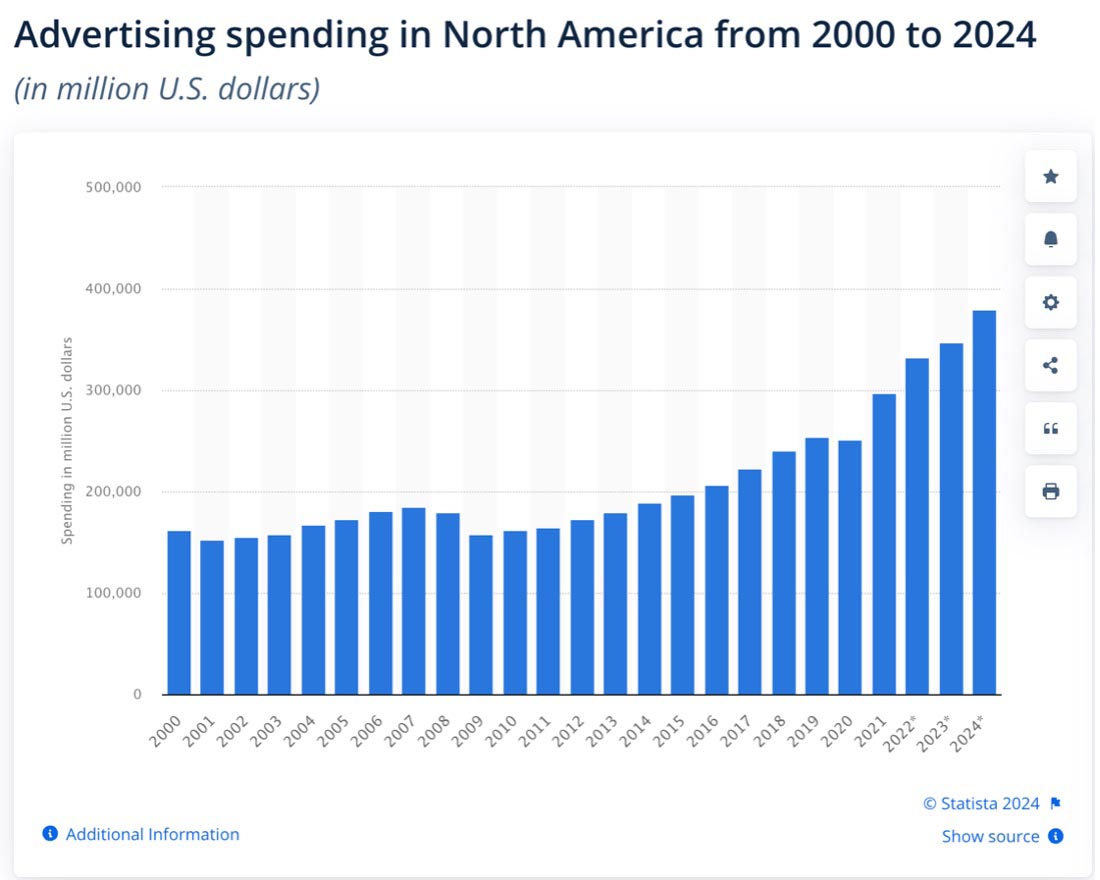
Source: Statista
More Work for Fewer Printers
Even as consumer spending continues to boom, the number of printing businesses continues to shrink. According to KeyPoint Intelligence, there were a total of 29,118 commercial printing establishments in the U.S. in 2010, that number had declined to 23,393 by 2020, a drop of 20%. This drop is even steeper among commercial printers, where the number of establishments declined from 22,048 to 16,283, a drop of 26%.
Smithers estimates that, as a result of the pandemic, the industry shrank an additional 11.9% between 2018 – 2022.
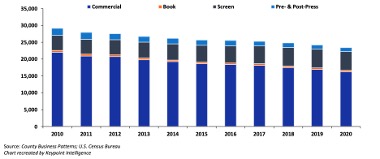
So you have a strong economy, growing ad spending, and a shrinking number of printing business to handle all of the business. Many printers are so busy right now that think they don’t need to do marketing . . . until they do.
Don’t Get Caught Flat-Footed
Right now, printers have many reasons to feel confident. But as these historical charts show, the factors keeping their presses busy—strong economic numbers, combined with a shrinking number of competitors—have nothing to do with their own competitive positioning.
So what happens when surprises come our way? A global pandemic, a major international event (war or natural disaster)? Or even something local, such as the closure of a manufacturing plant critical to the local economy or the arrival of a new, stronger-than-expected competitor?
When such things happen (and at some point, it’s likely that something will), a lack of consistent marketing will hurt you. You will find yourself needing strong brand reputation, brand trust, and brand recognition that cannot be built in a matter of weeks or even months. Changes can happen quickly and unexpectedly, but brand-building doesn’t. Printers who haven’t been investing in marketing can get caught flat-footed. Your window for responding to the crisis is likely to close faster than these things can be built.
So what is the industry’s biggest marketing problem? False security—specifically, false security that leads to an inconsistency and lack of long-term commitment to marketing. So don’t get caught by an unexpected turn of events. Create a long-term marketing strategy and stick to it. Then, when the unexpected arises, watch your competitors scramble while you are in position to pick up the pieces.















Discussion
Only verified members can comment.